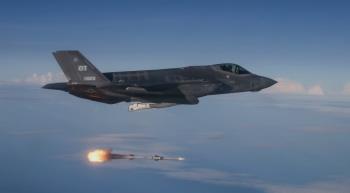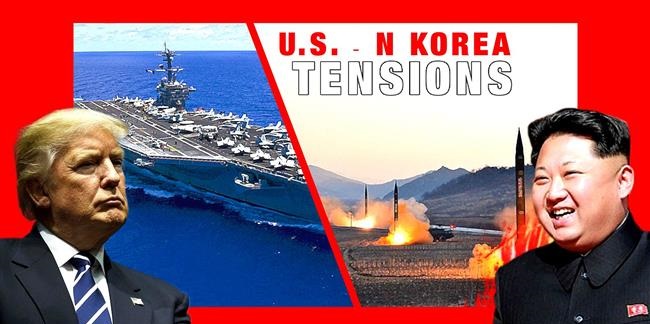Alwaght- A US nuclear submarine armed with guided missiles is in South Korea as North Korea holds massive long-range artillery drills amid rising tensions between Washington and Pyongyang.
The nuclear-powered USS Michigan, which is built to carry and launch ballistic missiles and Tomahawk cruise missiles, made the port call amid growing concerns that North Korea was set to carry out a nuclear test.
The move comes at a tense time in relations between Washington and Seoul on one side and North Korea on the other.
Meanwhile, North Korea on Tuesday marked on Tuesday the 85th anniversary of the founding of its Korean People's Army and many expected to see a test of military hardware.
However there were no reports of tests, but South Korean media said the North was carrying out its “largest-ever live-fire drills” to mark the occasion.
In a fresh stage of escalation between the US and North Korea, President Donald Trump early in April promised to send a “very powerful armada,” led by the aircraft carrier ‘USS Carl Vinson,’ to press Pyongyang into abandoning its nuclear and missile programs. North Korea ignored the threats went on to test new ballistic missiles and showcased more weapons at a massive parade.
North Korea vows to end US nuclear blackmail
North Korea's state media in a commentary marking the 85th anniversary of the foundation of the Korean People's Army, said its military was prepared "to bring to closure the history of U.S. scheming and nuclear blackmail".
"There is no limit to the strike power of the People's Army armed with our style of cutting-edge military equipment including various precision and miniaturized nuclear weapons and submarine-launched ballistic missiles," the official Rodong Sinmun newspaper said in a front-page editorial.
Pyongyang has repeatedly urged Washington stop its “military hysteria” and come to its “senses” – or face a “merciless response.”
North Korea called the deployment of the ‘Carl Vinson’ carrier group “an extremely dangerous act by those who plan a nuclear war to invade,” and even vowed to sink the carrier with a “single strike.”
Kim In Ryong, North Korean ambassador to the UN, accused the US of using “gangster-like logic” and being “hell-bent on dangerous saber-rattling in South Korea,” while speaking at a press conference in New York last week.
Trump summons senate
Meanwhile, US president Donald Trump administration has asked every member of the US Senate to meet at the White House on Wednesday for a briefing on North Korea, in a rare and unusual move, amid mounting tensions with Pyongyang.
All 100 senators have been asked to attend the Wednesday briefing, which will be conducted by Secretary of State Rex Tillerson, Secretary of Defense Jim Mattis, Director of National Intelligence Dan Coats, and Chairman of the Joint Chiefs of Staff General Joseph Dunford, White House spokesman Sean Spicer said on Monday.
China deeply concerned
Elsewhere, the official China Daily said it was time for Pyongyang and Washington to take a step back from harsh rhetoric and heed calls for a peaceful resolution. "Judging from their recent words and deeds, policymakers in Pyongyang have seriously misread the U.N. sanctions, which are aimed at its nuclear/missile provocations, not its system or leadership," the newspaper said in an editorial.
"They are at once perilously overestimating their own strength and underestimating the hazards they are brewing for themselves."
World’s longest unresolved conflict
US-North Korea tensions have revived one of the world’s longest unresolved conflicts. Korea was ruled by Japan from 1910, then occupied by US and Soviet troops in 1945. The Republic of Korea was established in May 1948 in the US-occupied southern portion of the peninsula.
The Democratic People’s Republic of Korea was set up in the north four months later, under the Communist leader Kim Il-Sung. DPRK forces invaded the South in June 1950, seeking to reunify the country. When US-led UN troops intervened and advanced into North Korea, China and Russia, to an extent, got involved as well. The resulting stalemate was frozen by a 1953 armistice.
Over 28,500 US troops, sailors, airmen and marines in South Korea and now an armada of warships and submarines are a major source of tensions in the Korean Peninsula region and a pointer to Washington’s policy of provoking other countries in the region especially North Korea.



























